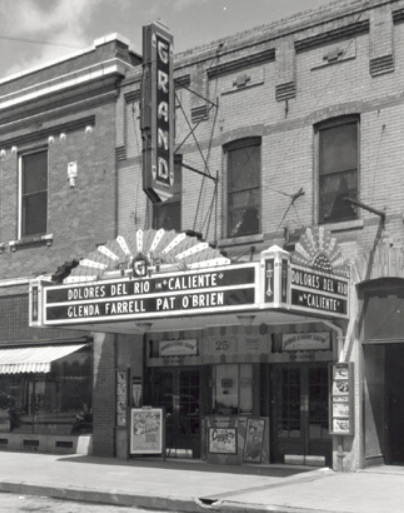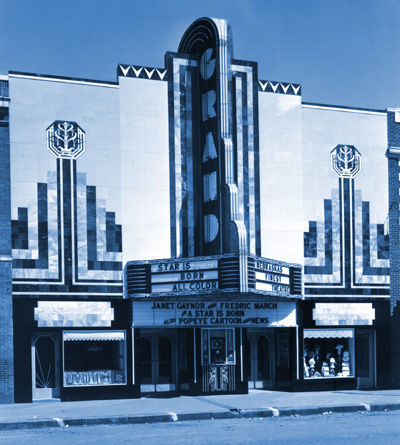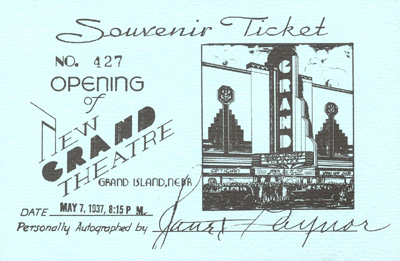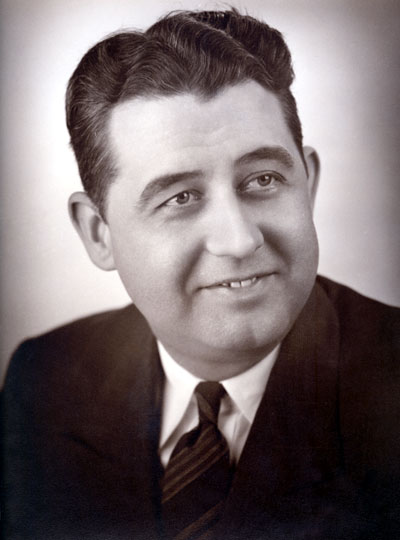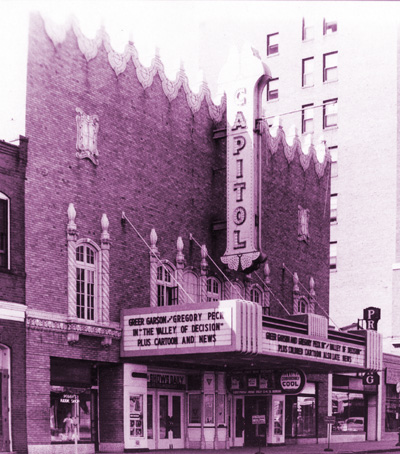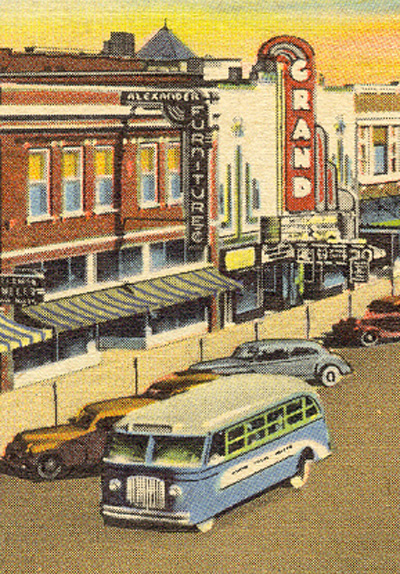History
-
1920'sThe Lydia
In the 1920’s The Lyda Movie House stood in the middle of the 300 block in downtown Grand Island. Business at the Lyda had suffered from the competition of the Capitol Theatre and the Island Theatre. The theatre had become run-down and was still showing silent films when all the other theatres in town had made the switch to sound
-
1930The Little Grand
In 1930, the Lyda was purchased by David Kaufman and Harry Shiller. The theatre underwent extensive remodeling and was renamed “The Grand.” About half the size of the present-day building, it was a modest theatre that struggled for survival in the depressed economy of a troubled town.
-
1937The Grand Opening
On May 7th, 1937, hundreds of people lined up along Third Street outside of the new theatre building. The largest neon sign in Grand Island graced the facade, which was build entirely of colored glass. It was the most beautiful modern building in town. The marquee proclaimed “Nebraska’s Finest and Most Modern Theatre!” 705 people were ushered in to watch the premiere of “A Star is Born” starring Janet Gaynor, Adolph Menjou and Fredrick March.
-
Wally Kemp
The manager of the Grand Theatre was a man named Wally Kemp. A master of promotion, Mr. Kemp was instrumental in the early success of the theatre. He organized “Kid Shows,” extravagant promotions aimed at the children of Grand Island. During World War II, he and the audience sang “God Bless America” before every show. Wally said “The fanfare, the hoopla, the ballyhoo…those were the keys to success. Unless you did something with a flourish, you needn’t have bothered doing them at all.”
-
The Golden Age
For the next few decades the Grand enjoyed major success under the management of Mr. Kemp. Even into the early 70s he retained the color cartoons, the kid’s shows and the short subjects abandoned by the other theatres. The curtain still opened and closed for each performance and the neon tubing glowed on. In 1975, Wally Kemp retired and the Grand’s services declined in his absence.
-
1985The Capitol
In 1985, The Capitol Theatre, the other movie palace in town was demolished. Later that year, the Grand Theatre also was closed, apparently forever. A year later, Jay French and Juan Portillo rescued the theatre and restored it to a first-rate show house. Once again showing cartoons before classic movies, the theatre enjoyed a much deserved resurgence in popularity.
-
1992The Grand Today
In 1992, the theatre was purchased by Fridley Corporation and became a first run cinema once again. This continued for 12 years until competition from modern multiplexes forced the theatre to close once again. The Fridleys announced that they would donate the building to a non-profit organization. A small group of dedicated business owners banded together to form “The Grand Foundation, Inc.” to save the last surviving movie palace in Grand Island.
-
2005Looking Forward
In March 2005, 75 years after David Kaufman originally purchased the theatre, the Grand Foundation received a grant from the Kaufmann-Cummings Foundation. This donation will assist with the purchase of equipment and building repairs. Donations in the form of cash gifts and volunteerism are crucial to the long-term success of the Grand Theatre.


